Presentation is Everything
An important step in becoming a successful fly angler is learning to properly present your fly to the fish.
Presentation involves choosing a target, placing a cast without alerting the fish, and manipulating your fly in the current so it looks like food to the fish.
You could easily spend a lifetime perfecting the art of the presentation, but it is important to start with a solid foundation.
Learning basic presentation strategy will give even the neophyte fly angler the chance to tangle with more fish.
The Dead Drift
If you want to catch fish on a fly rod, learn to imitate what they eat. Fly fishers do this by matching the hatch with the right fly, and also by presenting the fly in a way that looks natural.
In a stream, a fish’s dinner is usually served drifting in the current. The technique fly fishers use to imitate a naturally drifting insect is called “the dead drift.”
The challenge for fly fishers is that the line on the surface of the river creates drag, which disrupts the natural drift of the fly.
A wary trout or other river fish will notice any unnatural movement of the fly and quickly realize it is a fake. Anglers must take care that the fly is allowed to drift unhindered.
There are many ways to ensure this, but the most important technique that will help to achieve a good dead drift is learning to “mend” the fly line.
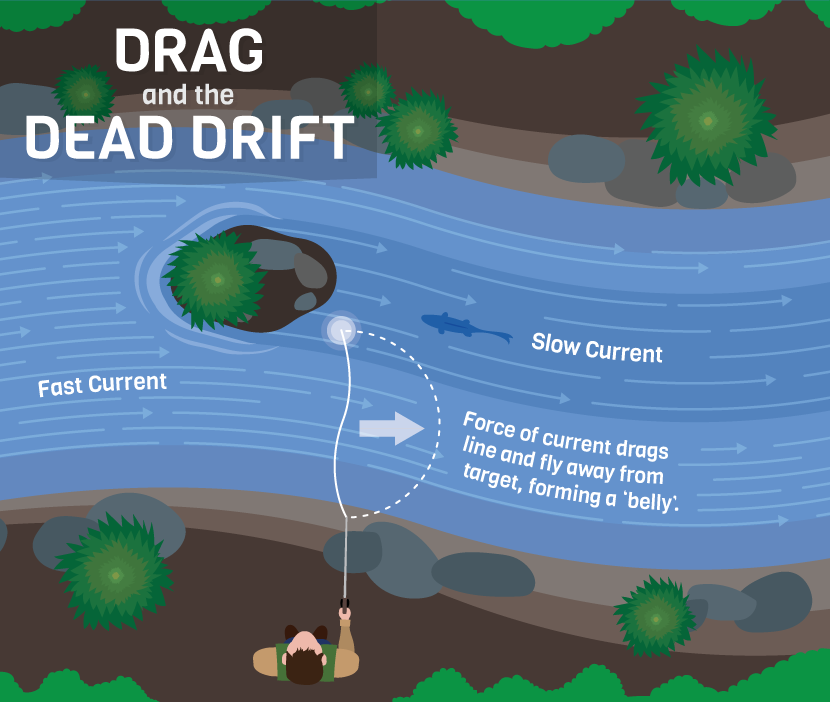
The Mend
A “mend” is the technique of repositioning the line on the river’s surface to counteract the force of drag from the current.
Fly fishers are often casting over swift currents to place their flies into pockets of slower water where fish are hiding.
When the fly lands in the slow water, the faster current in between can quickly sweep the line downstream. The tension from the current creates a downstream “belly” in the line, pulling the fly with it.
To correct this, and allow the fly time to drift like a natural insect, the line is repositioned upstream immediately after the cast.
How to mend upstream:
- 1. Cast to the target, ending with your rod tip pointed low and toward the fly.
- 2. Don’t let the line settle. Immediately draw a wide, upstream semicircle with the rod tip, raising the line up off the water and placing it upstream of where it landed.
- 3. Done correctly, the line should land with a slight upstream curve without pulling the fly away from the target.
- 4. Point the rod tip back at the fly and follow it as it drifts downstream. Now there will be slack in the line, giving the fly time to reach the trout before the current catches up with it.
Practice the mend until it becomes natural and automatic, and understand that there is no rule dictating how large the mend should be, how many mends you can make in one drift, or which direction you should mend.
The only rule is: do whatever it takes to get your fly drifting naturally.
Once you have a good understanding of the dead drift and the mend, correctly presenting your fly to trout from different angles will seem much easier.
The Cross Stream Presentation
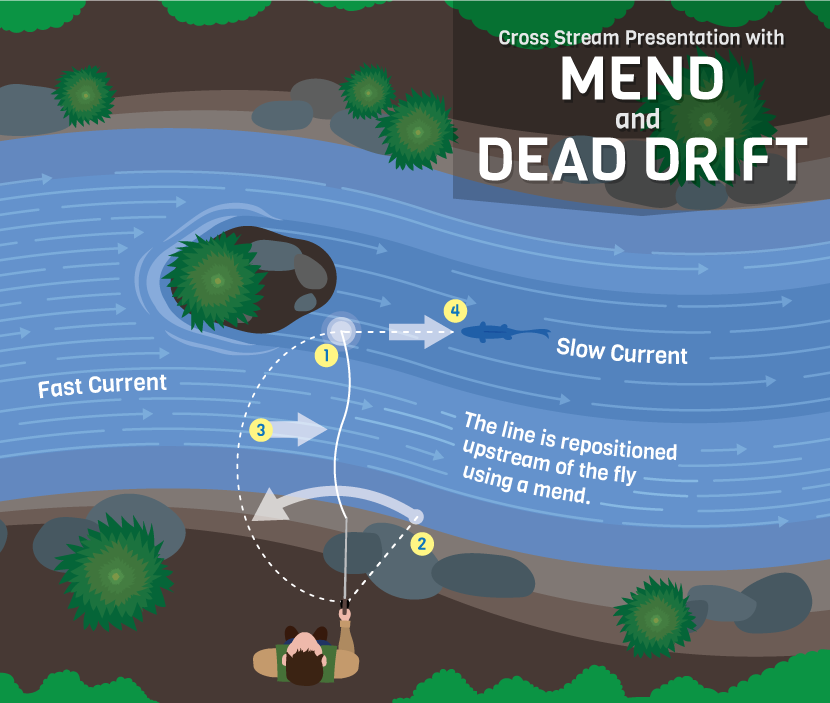
This style of presentation is commonly used when casting to targets in the middle of the stream or on the opposite side of it. Position yourself directly across or slightly downstream from the intended target, and make a cast perpendicular to the current.
When the fly lands, make a quick upstream mend. End with your rod tip low, and follow the fly, allowing it to drift for several seconds before making another cast.
Cross stream presentations are great for reaching mid-river structure that is difficult to wade to. Mending the line makes it possible to reach far into the river across multiple current seams and still achieve a natural drift with the fly.
When practicing the cross stream presentation, it is good to try to land your fly a few feet ahead of the target, so you have time to mend and let it settle before it drifts down to the fish.
The Upstream Presentation
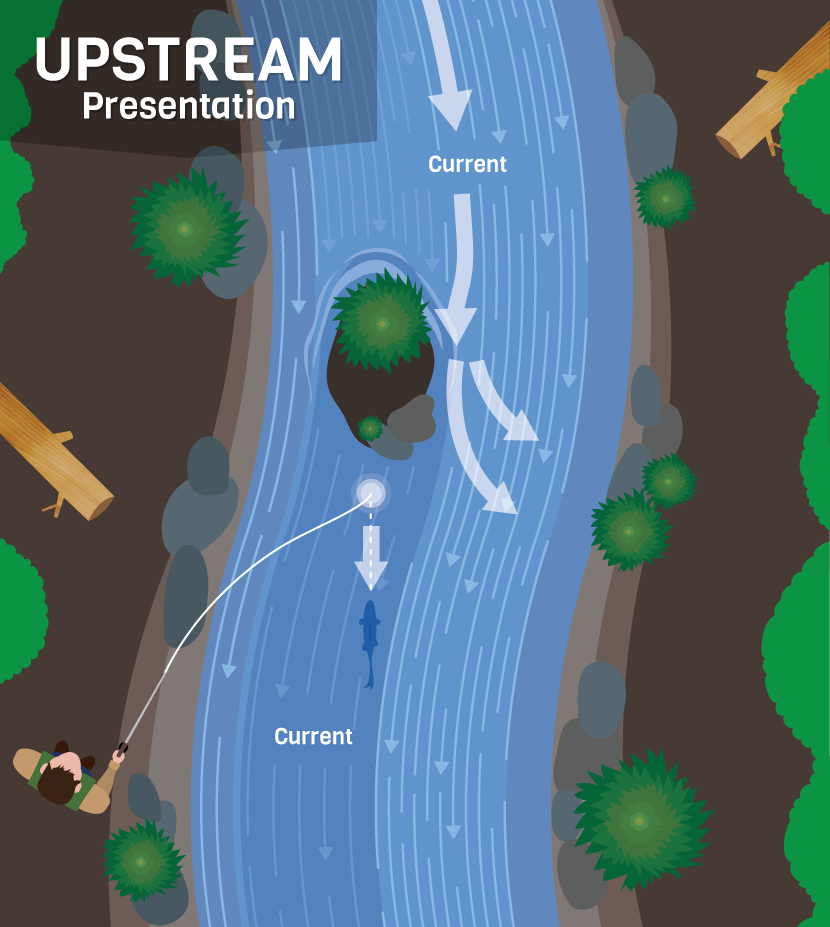
The upstream presentation involves positioning yourself well downstream of a target, casting directly upstream or slightly across the stream, and allowing the fly to drift back toward you with the current.
This is an easy way to create a dead drift because slack naturally builds in the line as it floats back downstream.
Make sure to retrieve the slack line as it comes in, so you have enough line tension for a hook set if a fish strikes.
Because you are casting from behind the fish as they face upstream in the current, presenting upstream is a great way to sneak up on fish.
Casting from behind the fish can be a challenge, because you risk the fly line and leader crossing over the fish and scaring them. Try to imagine where the fish will be, and make your cast from a slight angle so the line doesn’t land directly over them.
The Downstream Presentation
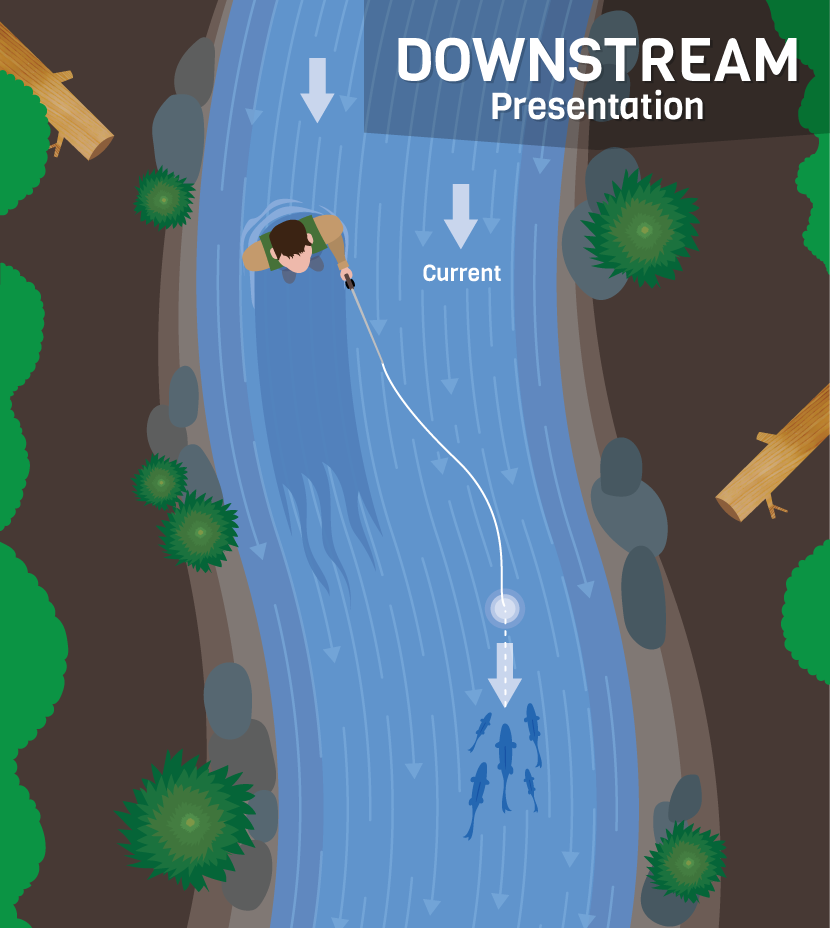
To perform a downstream presentation, position yourself well upstream of the target, cast downstream, and feed slack line as the fly drifts down to the trout.
Before making the cast, pull a few extra feet of line off the reel with your free hand. As the fly drifts downstream after the cast, let the extra line slide through your fingers to extend the drift.
Maintain contact with the line and be ready to set the hook at any moment.
Unlike other presentation angles, the downstream presentation ensures that the first thing the fish sees is your fly, not the leader or fly line.
This makes it a perfect presentation in glassy, calm water, or when sight-casting to rising fish that are easily spooked.
High Sticking
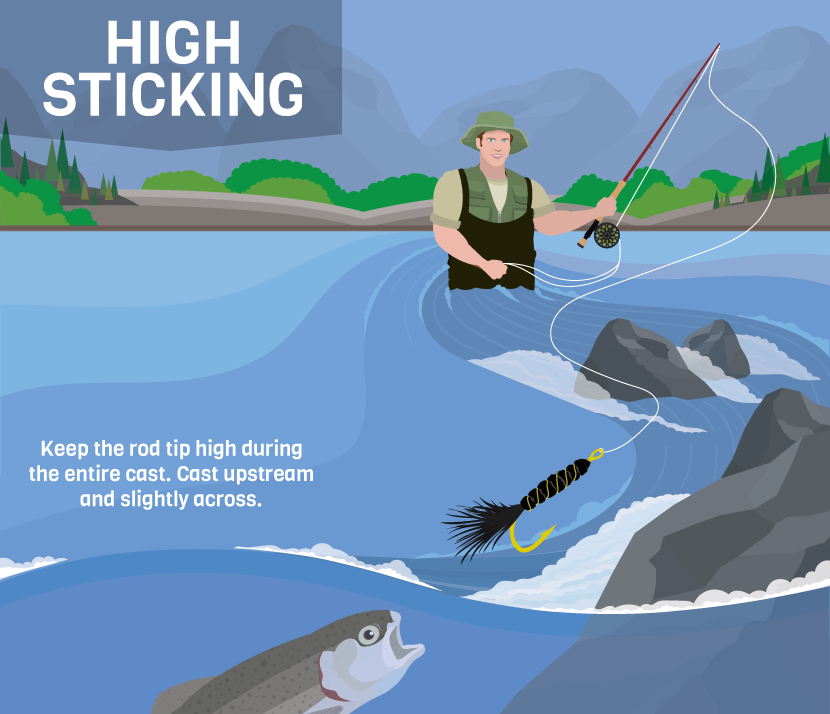
High sticking is different from other presentation methods because it involves keeping most of the fly line off the water by keeping your rod tip in the air and dangling your fly on a short line.
To perform a high stick presentation, get as close as possible to your target and make sure you only have a few feet of line – plus your leader – past the rod tip.
It can help to hold a few feet of slack in your free hand in case you need to cast further. Cast upstream and slightly across, ending with your rod tip high so the fly touches down before the leader.
When the fly lands, keep your tip up and follow it as it drifts, dangling it on the surface. As the fly progresses downstream, lower the rod tip to add slack and extend the drift.
This presentation works wonders in rough water or rivers with lots of boulders and complicated surface currents, because you can hold the line off the water where it won’t create drag.
Typically, high sticking is reserved for situations where the target is only one or two rod lengths away.
There are no rules dictating exactly what presentation to use in a given situation. It takes experience to figure out what works and what doesn’t.
If you practice and become proficient in each of these methods, you will begin to see that they are all interchangeable, and it is up to you to pick the one that will create the best presentation.
Read the water before making a cast. Present the fly to the same target from different angles, and observe how it is affected by the current. Use big mends and little mends.
Fish structure that is close to the bank and structure that is on the other side of the river. Try combining the different methods of presenting the fly in tricky spots.
With practice, you will soon have an entire bag of tricks to present your fly naturally in almost any situation.
Embed the article on your site

